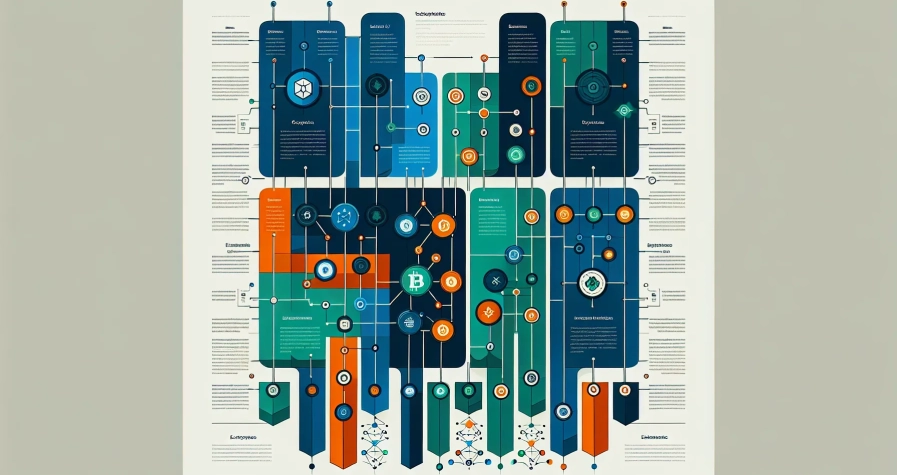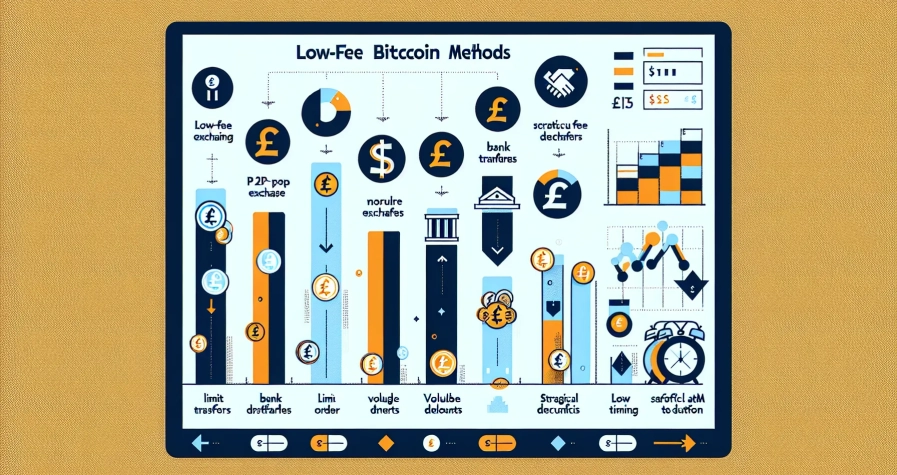Your cryptocurrency wallet contains digital assets worth potentially thousands of pounds, yet many crypto users make the critical mistake of not backing up their wallets properly. Without a secure backup, you’re just one device failure, theft, or software corruption away from losing your entire crypto portfolio forever.
Backing up your crypto wallet isn’t just recommended—it’s absolutely essential for protecting your digital wealth. Whether you’re using a hardware wallet, software wallet, or mobile app, creating multiple secure backups ensures you’ll never lose access to your cryptocurrencies, even in worst-case scenarios.
The good news? Creating a comprehensive backup strategy doesn’t require technical expertise. With the right approach and security measures, you can safeguard your crypto investments in under 30 minutes and gain complete peace of mind knowing your digital assets are protected.
Understanding the Importance of Crypto Wallet Backups
Cryptocurrency wallet backups serve as your financial lifeline when accessing digital assets becomes impossible. Your crypto wallet contains private keys that prove ownership of blockchain-based currencies, and losing these keys permanently eliminates access to your funds.
Hardware failures account for 60% of crypto wallet access issues, whilst software corruption and accidental deletion represent another 25% of loss incidents. Device theft, liquid damage, and ransomware attacks create additional scenarios where backup recovery becomes essential for wallet restoration.
Financial Impact of Lost Wallets
Lost cryptocurrency wallets create irreversible financial consequences that affect millions of users globally. Chainalysis reports indicate approximately 20% of existing Bitcoin supply remains permanently inaccessible due to lost private keys.
| Loss Scenario | Percentage of Total Losses | Average Value Lost |
|---|---|---|
| Hardware failure | 44% | £8,500 |
| Forgotten passwords | 23% | £12,200 |
| Device theft | 18% | £6,800 |
| Software corruption | 15% | £4,300 |
Individual cases demonstrate the severity of wallet losses, with documented incidents ranging from £50 to £280 million in inaccessible funds. James Howells famously discarded a hard drive containing 7,500 Bitcoin, whilst Stefan Thomas lost access to 7,002 Bitcoin due to forgotten password attempts.
Technical Vulnerabilities in Crypto Storage
Modern cryptocurrency wallets face multiple technical vulnerabilities that compromise long-term accessibility. Operating system updates frequently render older wallet software incompatible, whilst file corruption affects stored wallet data during unexpected shutdowns or power failures.
Mobile devices present additional risks through automatic cloud synchronisation, accidental factory resets, and operating system crashes. Desktop computers experience hard drive failures at a rate of 3-5% annually, making hardware redundancy crucial for crypto asset protection.
Cloud storage services create dependency risks when providers change terms, experience outages, or face security breaches. Single points of failure eliminate access to digital assets when primary storage methods become compromised or unavailable.
Legal and Recovery Limitations
Cryptocurrency transactions operate on immutable blockchain networks where reversed payments become technically impossible. Traditional banking recovery methods don’t apply to decentralised digital currencies, making personal backup strategies the only reliable recovery option.
Exchanges occasionally experience security breaches, regulatory shutdowns, or technical failures that prevent withdrawal access. Mt. Gox, QuadrigaCX, and FTX demonstrate how exchange-related issues can eliminate access to stored cryptocurrencies regardless of individual user security practices.
Third-party recovery services claim wallet restoration capabilities but operate with limited success rates below 15%. Professional recovery attempts cost between £5,000-£50,000 with no guarantee of successful key retrieval, making preventive backup strategies significantly more cost-effective than reactive recovery efforts.
Types of Crypto Wallets and Their Backup Requirements
Different wallet types require distinct backup approaches that align with their security architecture and storage methods. Each wallet category presents unique backup challenges and opportunities for protecting your digital assets.
Hardware Wallets
Hardware wallets store your private keys offline in a secure physical device equipped with specialised chips designed to resist hacking attempts and physical tampering. These devices generate a seed phrase (typically 12 to 24 words) during initial setup that serves as your primary backup mechanism.
You must record this seed phrase manually on paper or engrave it onto metal plates for enhanced durability against environmental damage. The device itself isn’t the backup—your seed phrase represents the true recovery method for accessing your funds.
Hardware wallet backup requirements:
- Manual recording of seed phrases on acid-free paper using waterproof ink
- Metal engraving for maximum durability against fire and water damage
- Offline storage in secure locations such as fireproof safes or bank deposit boxes
- Multiple physical copies stored in different geographical locations
Software Wallets
Software wallets (hot wallets) operate on smartphones or computers and rely primarily on seed phrases for backup recovery. These wallets connect to the internet regularly, making them more vulnerable to digital attacks compared to hardware alternatives.
You must write down your seed phrase by hand immediately after wallet creation and avoid storing this information digitally to prevent hacking risks. Additional backup options include cold storage transfers or encrypted cloud backups as secondary measures.
Software wallet backup requirements:
- Handwritten seed phrase documentation stored offline
- Encrypted secondary backups for redundancy (optional)
- Regular backup verification to ensure functionality
- Avoidance of digital storage methods for primary backups
Paper Wallets
Paper wallets consist of physical printouts containing your private and public keys in QR code or text format. These represent one of the earliest cold storage methods but carry significant handling and durability risks.
You face potential loss from physical damage, ink degradation, human error during key generation, or improper storage conditions. Modern security experts generally recommend hardware wallets over paper alternatives due to these vulnerabilities.
- High-quality printing on durable paper materials
- Protection from moisture, light, and temperature extremes
- Multiple copies stored in separate secure locations
- Regular inspection for degradation or damage
Essential Backup Methods for Crypto Wallets
Three fundamental backup methods protect your cryptocurrency investments from permanent loss. Each method serves distinct security purposes and requires specific implementation strategies.
Seed Phrase Backup
A seed phrase consists of 12-24 randomly generated words that grant complete access to your cryptocurrency holdings. You must write this phrase on durable materials like metal backup devices (Cryptosteel, Steelwallet) or archival-quality paper to withstand environmental damage. Physical storage in fireproof safes or safety deposit boxes provides optimal security against both digital threats and natural disasters.
Creating multiple copies stored in geographically separate locations reduces risk from theft or localised damage. Never store seed phrases digitally without military-grade encryption, as hackers target these files specifically. Verify your written seed phrase immediately after backup by attempting a test recovery on a separate device.
Private Key Backup
Your private key functions as the cryptographic signature that authorises all transactions from your wallet address. Hardware wallets maintain these keys in offline cold storage, protecting them from malware and remote attacks that compromise internet-connected devices. Store backup copies of private keys using the same physical security measures as seed phrases.
Export private keys only when absolutely necessary for backup purposes, as exposing them increases vulnerability. Use air-gapped computers (never connected to the internet) when handling private key files to prevent digital infiltration. Test your private key backups periodically to confirm they remain accessible and uncorrupted.
Wallet File Backup
Wallet files contain your private keys alongside transaction history and custom settings specific to your wallet software. Encrypt these files using AES-256 encryption before storing them on offline media like USB drives or microSD cards. Create multiple encrypted copies distributed across secure physical locations to ensure redundancy.
Update wallet file backups after significant changes like adding new addresses or modifying security settings. Store encrypted wallet files separately from their passwords, using secure password managers or physical documentation in different locations. Cloud storage serves only as a tertiary backup option due to third-party access risks, even with strong encryption.
Best Practices for Secure Wallet Backups
Implementing proper backup practices protects your cryptocurrency investments from permanent loss whilst maintaining optimal security standards. Focus on combining physical durability with strategic redundancy to create multiple layers of protection.
Physical Storage Options
Engrave your seed phrase on metal plates using products like Cryptosteel for maximum durability against fire, water and physical degradation. Metal storage solutions withstand temperatures exceeding 1,000°C and resist corrosion for decades, making them the gold standard for long-term crypto storage.
Store multiple physical backups in separate secure locations such as fireproof safes, bank safety deposit boxes or trusted family members’ homes. Distributing backups across different geographical locations prevents total loss from localised disasters like floods, fires or burglaries.
Avoid paper-only storage methods as paper deteriorates over time and succumbs to environmental damage. Consider laminating paper backups if you must use them temporarily, but transition to metal storage solutions as your holdings grow.
Never photograph or scan your seed phrase as digital images create security vulnerabilities. Physical documentation eliminates digital attack vectors whilst maintaining complete control over your backup access.
Digital Storage Considerations
Use encrypted USB drives or external hard drives for supplementary digital backups, ensuring robust encryption protocols protect your wallet data. Store encrypted backups offline and physically secure the storage devices in separate locations from your primary backups.
Avoid cloud storage services entirely due to third-party risks and potential security breaches. Cloud platforms create additional attack surfaces where hackers target centralised data repositories containing thousands of users’ sensitive information.
Implement air-gapped computers for handling digital wallet files if you require electronic backups. Air-gapped systems remain permanently disconnected from the internet, eliminating remote hacking possibilities whilst allowing secure backup creation.
Consider brain wallets only as emergency fallbacks rather than primary storage methods. Memorised seed phrases lack reliability and become vulnerable to memory loss, stress or medical emergencies that could permanently block wallet access.
Creating Multiple Backup Copies
Create 3-5 backup copies using different storage media and distribute them across various secure locations. Multiple backups mitigate risks from individual storage failures, natural disasters or theft affecting single locations.
Implement Shamir’s Secret Sharing to split your seed phrase across multiple parts, requiring a predetermined number of pieces to reconstruct the complete phrase. This method prevents single points of failure whilst maintaining security if individual backup pieces become compromised.
Test your backup recovery process regularly by attempting wallet restoration using each backup copy. Verification ensures your backups remain functional and readable when you need them most, preventing unpleasant surprises during actual recovery scenarios.
Update your backup strategy as your cryptocurrency portfolio grows or security requirements evolve. Review backup locations, storage methods and redundancy levels quarterly to maintain optimal protection for your digital assets.
Common Backup Mistakes to Avoid
Backing up only visible private keys creates a false sense of security that can cost you access to your entire portfolio. Many wallets use hidden keys internally for change addresses and internal operations, meaning incomplete backups may result in permanent loss of funds when you attempt wallet recovery.
Storing backups online without encryption exposes your cryptocurrency to theft and unauthorised access. Backups stored on cloud services, email accounts or unencrypted digital storage remain vulnerable to hackers who can access your private keys and drain your wallet within minutes.
Failing to back up regularly leaves you vulnerable to losing recent transactions and newly generated addresses. Your wallet changes over time as it creates new addresses and keys, so one-time backups from months ago won’t reflect your current asset holdings or wallet structure.
Ignoring testing of backups can lead to devastating discoveries when you actually need to recover your wallet. You must verify your backup’s functionality by performing test recoveries on separate devices to ensure the restoration process works correctly before emergencies arise.
Using unreliable backup methods introduces unnecessary risks to your cryptocurrency security. Paper backups deteriorate from moisture, fire and physical damage whilst brain wallets rely on memory which proves unreliable over time. Cloud backups involve third-party risks where service providers can access or lose your data.
Leaving large amounts on exchanges without two-factor authentication creates multiple security vulnerabilities beyond backup concerns. Exchanges can freeze accounts, suffer security breaches or shut down operations, whilst lacking 2FA makes your account susceptible to unauthorised access through password breaches.
Sharing private keys or seed phrases with others completely compromises your wallet’s security regardless of how well you’ve backed up your information. Anyone with access to your private keys can transfer your cryptocurrency without your knowledge or consent, making this practice equivalent to handing over your bank account details.
Downloading wallet software from unverified sources can install compromised applications that steal your backup information during the creation process. Malicious wallet applications can capture your seed phrases, private keys or backup files and transmit them to attackers before you even complete your backup strategy.
Testing and Verifying Your Wallet Backup
Testing your crypto wallet backup validates that your recovery method works correctly before you face an emergency situation. Hardware wallet users complete this verification by resetting their device to factory settings and restoring it using their recorded seed phrase. The restored wallet’s public address must match your original wallet address exactly to confirm successful backup integrity.
Verification steps for hardware wallets:
- Reset your hardware device to factory defaults through the device settings
- Enter your backup seed phrase in the correct sequential order
- Generate a new receiving address and compare it with your original address
- Check transaction history accessibility to ensure complete restoration
- Document the successful test with date and wallet details for your records
Software wallet verification follows these protocols:
- Uninstall your current wallet application completely from your device
- Reinstall the wallet software from the official developer website
- Import your backup using the seed phrase or private key method
- Verify all wallet addresses match your previous configuration
- Confirm access to transaction history and current balance information
Proprietary dual card systems require manufacturer-specific testing procedures that differ from standard hardware wallets. Consult your device documentation for precise restoration steps as these systems often use unique backup formats or require specific card combinations during recovery.
Regular backup inspection prevents degradation issues:
| Backup Type | Inspection Frequency | Warning Signs | Action Required |
|---|---|---|---|
| Paper backups | Every 6 months | Fading ink, water damage | Create fresh backup immediately |
| Metal plates | Annually | Corrosion, unclear engravings | Re-engrave on new metal surface |
| Hardware devices | Every 3 months | Physical damage, button failure | Test seed phrase recovery process |
| Encrypted files | Monthly | File corruption, access errors | Generate new encrypted backup |
Document each successful backup test with timestamps and wallet addresses to maintain verification records. Failed backup tests require immediate attention – transfer your cryptocurrency assets to a new wallet with fresh backup materials rather than attempting repairs on compromised storage methods.
Multiple backup copies stored in different locations undergo individual testing to ensure redundancy effectiveness. Test each backup copy separately using the same verification process to confirm that geographical separation hasn’t compromised accessibility or readability of your recovery materials.
Conclusion
Your cryptocurrency investments deserve the same protection you’d give any valuable asset. Taking time to implement proper backup strategies isn’t just recommended—it’s absolutely essential for preserving your digital wealth.
The 30 minutes you invest in creating secure backups today could save you from devastating financial losses tomorrow. With hardware failures and software corruption affecting thousands of crypto users annually you can’t afford to leave your assets unprotected.
Remember that backup creation is only half the battle. Regular testing and verification ensure your recovery methods work when you need them most. Stay proactive update your backups as your portfolio grows and never rely on a single backup method.
Your future self will thank you for the precautions you take today.
Frequently Asked Questions
What happens if I lose my cryptocurrency wallet without a backup?
Without a proper backup, losing your cryptocurrency wallet means permanently losing access to your digital assets. Unlike traditional banking, there’s no customer service to restore your funds. Studies show that around 20% of Bitcoin supply is permanently inaccessible due to lost private keys, with individual losses ranging from £50 to £280 million.
How long does it take to create a secure crypto wallet backup?
Creating a robust cryptocurrency wallet backup strategy takes less than 30 minutes. This includes writing down your seed phrase on durable materials, creating multiple copies, and storing them in separate secure locations. The initial setup is quick, but regular testing and updates are essential for maintaining security.
What are the main causes of crypto wallet access loss?
Hardware failures account for 60% of wallet access issues, whilst software corruption and accidental deletion contribute another 25%. Other common causes include device theft, operating system incompatibilities, mobile device vulnerabilities, and forgetting passwords or losing seed phrases during house moves or emergencies.
What’s the difference between seed phrase and private key backups?
A seed phrase consists of 12-24 randomly generated words that can restore your entire wallet, whilst private keys are alphanumeric codes that authorise specific transactions. Seed phrases are more user-friendly and comprehensive, making them the preferred backup method for most users. Both should be stored offline on durable materials.
Should I store my crypto wallet backup online or in the cloud?
No, avoid storing wallet backups in cloud storage due to third-party security risks. Instead, use offline methods like metal plates for seed phrases, encrypted USB drives, or external hard drives stored in separate secure locations. Digital backups should always be encrypted and kept offline to prevent unauthorised access.
How often should I test my cryptocurrency wallet backups?
Test your backups every 3-6 months to ensure they remain functional. Verify that restored wallet addresses match originals and transaction histories are accessible. Regular testing helps identify potential issues before emergencies occur. Document successful tests and address any failures immediately to maintain backup reliability.
What materials should I use to store my seed phrase backup?
Use durable materials like metal plates or stainless steel to engrave seed phrases, as they withstand fire, water, and environmental damage. Avoid paper-only storage due to deterioration over time. Never photograph seed phrases or store them digitally without encryption, as this creates security vulnerabilities.
Can third-party services recover lost cryptocurrency wallets?
Third-party recovery services exist but have low success rates and high costs, making them unreliable solutions. Traditional banking recovery methods don’t apply to decentralised cryptocurrencies. Prevention through proper backup strategies is far more effective and cost-efficient than attempting reactive recovery after loss occurs.
What’s Shamir’s Secret Sharing for crypto wallet backups?
Shamir’s Secret Sharing is an advanced security method that splits your backup into multiple parts, requiring a predetermined number of pieces to reconstruct the original. This enhances security by ensuring no single backup location contains complete access information, whilst maintaining redundancy for recovery purposes.
How many backup copies should I create for my crypto wallet?
Create at least 2-3 backup copies stored in different secure locations to prevent total loss from disasters or theft. Multiple copies provide redundancy whilst separate storage locations mitigate risks from localised incidents like fires or floods. Ensure all copies use durable materials and proper security measures.









